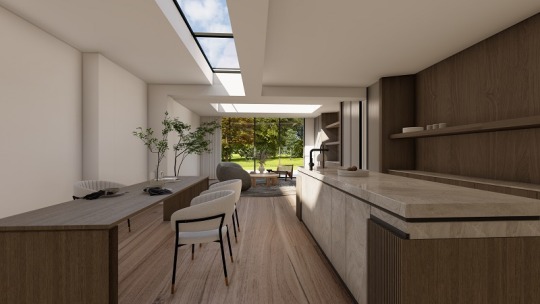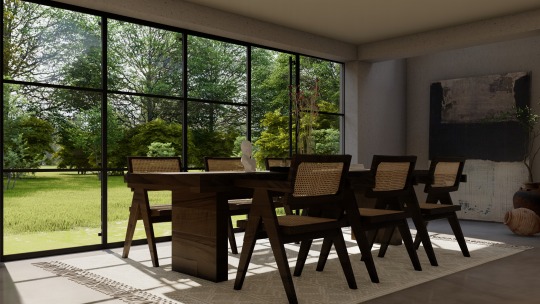#Residential Architects Wentworth estate
Audio
Building a house is a cumbersome procedure and delegating the complete design process to an Architects helps to save a lot of time and energy by providing us with peace of mind and at the same time ensuring that the building and entire design process is handled properly and smoothly. If you are searching for such proficient residential architects in Wentworth estate, consider getting in touch with us now!
0 notes
Text
Canadian Houses: New Residences in Canada
Canadian Houses, Residences in Canada, Property Photos, Buildings, Architect, Real Estate Designs
Canadian Houses : Residences
Key Contemporary Residential Architecture Developments in Canada, North America
post updated 18 Jan 2021
Houses in Canada
We’ve selected what we feel are the key examples of Canadian Houses. We aim to include buildings that are either of top quality or interesting, or ideally both.
We cover completed buildings, new building designs, architectural exhibitions and architecture competitions across Canada. The focus is on contemporary Canadian residences but information on traditional buildings is also welcome.
We have 1 page of Canadian residential architecture selections with links to hundreds of individual project pages.
New Canadian Homes
Contemporary Canadian Residences – latest additions to this page, arranged chronologically:
14 Jan 2021
Fold House, Hamilton, Ontario
17 Dec 2020
Lambton Farmhouse, Ontario
8 Dec 2020
Le Littoral, La Malbaie, Québec
Design: Architecture49
photo : Stéphane Brügger
Le Littoral Residence, La Malbaie
A couple passionate about gastronomy and great lovers of Charlevoix dreamed of designing a contemporary residence in this exceptional natural setting. This was to both enjoy a pied-à-terre in the region, but also to create a high-end tourist home where families, friends, or colleagues could gather.
26 Nov, 2020
Maison Koya, Saint-Sauveur
Design: Alain Carle Architecte
photo : Raphael Thibodeau
Maison Koya, Saint-Sauveur
The Maison Koya site is part of a real estate development on the approaches to the town of Saint-Sauveur in the Laurentians. This area is in Montréal’s second ring of outlying communities, where the occupants have chosen to settle to combine a lifestyle in a natural setting (in the mountains) with the conveniences of a small regional town.
18 Nov 2020
Double Header House, Victoria, BC
17 Nov 2020
Forest House I, Bolton-Est, Eastern Townships, QC
Design: Natalie Dionne Architecture
photo : Raphaël Thibodeau
Forest House I, Eastern Townships
Forest House I is the latest work by Montréal-based studio, Natalie Dionne Architecture. The firm has earned widespread praise over the years for its contextual approach, its creativity, and its attention to detail. Forest House I adds to a rich portfolio of original, residential homes, equal parts urban and rural.
26 Oct 2020
Blackwood Studio, Hinchinbrooke
20 Oct 2020
Cowley Avenue House, Ottawa
8 Oct 2020
Wendover House, Ottawa
31 Jul 2020
Chester Cottage in Nova Scotia
14 Jul 2020
Portland Residence in Mont-Royal, Québec
4 Jun 2020
Lake Huron Summer House, Ontario
Architects: Saota
photograph : Adam Letch
Lake Huron Summer House in Ontario
This summer house is set on the banks of Lake Huron in a small, remote Canadian town about an hour’s drive from London, Ontario.
14 May 2020
Abacus House on Bras d’Or Lake, Nova Scotia
4 May 2020
103, Land House in Meaford, Ontario
24 Apr 2020
La Frangine Residence Stoneham-et-Tewkesbury
22 Apr 2020
Lakeside Cabin in Lac-Brome, Quebec
31 Mar 2020
Ravine House near Don River Watershed
4 Feb 2020
Rodeo Drive House, Calgary, Alberta, Canada
Architects: Alloy Homes Incorporated
photograph : Joel Klassen
Rodeo Drive House in Calgary, Alberta
This family home is built on a small, triangular lot that was considered virtually unusable. Situated atop a ridge overlooking the Calgary Stampede Grandstand, the views are magnificent from the upper floors.
1 Feb 2020
Modern Farmhouse, Calgary, Alberta
Architects: Alloy Homes Incorporated
photograph : Joel Klassen
Modern Farmhouse near Calgary, Alberta
The architecture is inspired by the simple lines and humble materials of the adjacent working ranch.
31 Jan 2020
River’s Edge House, Calgary
Architects: Alloy Homes Incorporated
photo : Joel Klassen
River’s Edge House in Calgary, Alberta
This new Canadian family home was designed and built to feel like it had been a part of the neighbourhood for years. The property is wrapped in low-maintenance natural materials designed to weather gently and enhance its character over the years.
5 Nov 2019
The River Cabins, Wheatley River, Prince Edward County
Design: Nine Yards Studio
photograph : Tamzin Gillis, Nine Yards Studio
Prince Edward County Buildings
The smallest province in Canada, Prince Edward Island is celebrated for its vibrant arts and culture scene and is renowned for culinary experiences featuring world-class seafood and produce.
21 Jun 2019
Muskoka Boathouse in Ontario
16 Jun 2019
Pilon-Hébert Residence in Potton, Québec
11 Jun 2019
Powder Snow House in Bromont, Québec
28 May 2019
Hatley House in Québec
14 May 2019
Church Residence in Frelighsburg, Québec
17 Apr 2019
Gazing House in Scarborough Junction, Toronto
20 Mar 2019
Residence Le Nid on the St. Lawrence River, Quebec
17 Mar 2019
Dans l’Escarpement in Saint-Faustin-Lac-Carré
30 Jan 2019
La Barque Residence in Saint-Donat-de-Montcalm
11 Dec 2018
TRIPTYCH House in Wentworth-Nord, Quebec
3 Dec 2018
Friesen Wong House in Okanagan, British Columbia
2 Dec 2018
Shelter on a Rock in Racine, Québec
14 Nov 2018
Long Horizontals House in Petite-Rivière-Saint-François
2 Oct 2018
Vallée du Parc Residence in Shawinigan, Québec
16 May 2018
Gulf Islands Residence, Strait of Georgia, British Columbia, western Canada
Architects: RUFproject
photograph : Ivan Hunter
Gulf Islands Residence
20 Feb 2018
La Cornette House, Township of Cleveland, Québec, Eastern Canada
Architects: YH2
photo © Francis Pelletier
La Cornette House in the Township of Cleveland
Built on the slope of a small hill, La Cornette is a country house open to the pastoral landscape that surrounds it. Under a soaring roof resembling a nun’s cornet wimple is a roomy dwelling modelled on traditional Quebec houses of old that lodged large families and their relatives.
19 Feb 2018
La Luge Cabin, La Conception, in the Laurentides region of Quebec
Architects: YH2
photography © Francis Pelletier
La Luge in La Conception
Mostly dedicated to the enjoyment of Quebec’s winter, La Luge is a secondary home lying in the midst of the forest. Nestled on its site, surrounded by dense vegetation preserving the house’s privacy, La Luge integrates a private spa which occupies almost a third of the useable area, adding on to the traditional countryside living spaces.
16 Feb 2018
Window on the Lake, Saint-Élie-de-Caxton, Mauricie region, province of Quebec
Architects: YH2
photography © Francis Pelletier
Window on the Lake in Saint-Élie-de-Caxton
The house stands on the site of an old family cottage, just steps away from the shores of Lac Plaisant in the Mauricie region. Thanks to its simplicity, restraint and refinement, the project embodies the architect’s attempt to capture the essence of cottage life – a wooden home designed for vacations and enabling true communion with nature.
9 Feb 2018
Sky House, Stoney Lake, Ontario
Design: Julia Jamrozik and Coryn Kempster
photography : Doublespace Photography
Sky House on Stoney Lake
Negotiating the steep topography of a lake-side site, this holiday house consists of two volumes stacked on one another. The lower volume nestles into the landscape so that it is barely visible as one first approaches the house.
6 Feb 2018
The Wooden Wing, Lac-Supérieur, Quebec
Design: YH2 architecture
photography : David Marien-Landry
The Wooden Wing in Lac-Supérieur
The Wooden Wing is a large cottage on the shores of Lac Supérieur, in Quebec’s Laurentians. The house is perched on a sizeable outcrop of granite bedrock, giving it a commanding yet intimate view of the lake and Mont Tremblant, on the other side.
4 Feb 2018
Withrow Laneway House, Calgary, Alberta
Architects: Studio North
photo : Mark Erickson
Withrow Laneway House in Calgary
Affordable housing in a thriving city like Calgary is a challenge for many, not the least for two newly graduated professionals starting a design studio with big dreams and a limited budget. We see alleys as a new place for community and dwelling. This project offers an opportunity to save one of Calgary’s heritage houses and to build an affordable, compact living space in the inner city.
19 Jan 2018
Indigo Lane House, Whistler, British Columbia, western Canada
Design: Stark Architecture Ltd.
photo © Krista Jahnke
New House in Whistler, BC
A crazy site! But one of the greatest things about Architecture is having lots of constraints. The more constraints, the more inventive you have to be. The site drops steeply from the road, almost a 25 ft sheer drop down to a flat site, with retaining walls below.
Canada Properties Archive from 2009 to 2016:
Canadian Homes
More Canadian Houses online soon
Location: Canada, North America
Architecture in Canada
Canada Architecture Design – chronological list
Montreal Architecture Walking Tours : city walks by e-architect
Montreal Architecture News
Canadian Architect Studios
Habitat 67, Montreal, Quebec
Moshe Safdie, Architect
Habitat 67 Buildings
New Home
New House
Canadian Architecture by City
Montreal Buildings – key buildings + designs
Toronto Architecture – key buildings + designs
Calgary Buildings – key buildings + designs
Canada Built Environment
Canadian Architecture : news + key projects
Vancouver Architecture Walking Tours, BC
Canadian Architecture Prize, Toronto : AZ Awards – Winners News
Fogo Island Artist Studios
Comments / photos for the Canadian Houses page welcome
Website: Canada
The post Canadian Houses: New Residences in Canada appeared first on e-architect.
0 notes
Text
Journal - Midnight Maple: 12 Canadian Homes Cloaked in Black
Architects: Showcase your next project through Architizer and sign up for our inspirational newsletter.
Canadian residential design has continuously evolved alongside the country’s culture and environmental conditions. Large-scale immigration helped shape Canada into one of the most ethnically diverse nations in the world, a place that mixes styles, traditions and values. Simultaneously, a northern climate with subarctic and arctic weather has greatly impacted the vernacular and modern building traditions of these diverse groups. In a country where igloos and luxury urban real estate coexist, the similarities between residential projects can be few and far between.
The following collection takes a closer look at Canadian houses wrapped in black cladding. Built with matte material envelopes that explore depth and texture, the projects stand in stark contrast to their surrounding landscapes. Designed with particular attention to craft, the projects balance privacy while providing views to the Canadian landscape. Though their exteriors are dark and solemn in nature, the projects are typically formed with warm, spacious interiors to keep out the cold. Juxtaposing different programs and outdoor areas, the houses connect to natural settings with simple geometry. Together, they begin to reflect Canada’s modern residential design culture while embracing the dark side.


Fogo Island Artist Studios by Saunders Architecture, Newfoundland, Canada
Sited on an island in the North Atlantic, these artist studios were designed to respect a dramatic landscape and local culture. Created with three buildings housing six total studios, the project features bold geometry that lightly touches the natural environment. Elevated to provide views to the sea, the buildings were oriented so that occupants could observe the area’s changing seasons while the structure itself weathers over time.


La Héronnière by Alain Carle Architecte, Wentworth, Canada
La Héronnière was created as an interpretation of recycling. Exploring upcycling and renewable energy, the project reorganizes the relationships of its site to create a plateau for outdoor living. Defined by the programmatic concepts of Reuse, Supply, Occupation and Distinction, the home reflects the clients’ desire to live symbiotically and harmoniously with nature.


Cross-Laminated-Timber Cottage by Kariouk Associates, Québec, Canada
Located next to a private lake in a remote, wooded location, this cottage was designed to replace a decaying, family-owned structure on the site. The home was created using dark, prefabricated cross-laminated timber that forms the project’s outer shell. The new cottage features an open spatial arrangement while using the former building’s original dimensions and orientation to the lake.


Bolton Residence by _naturehumaine, Bolton-Est, Canada
The Bolton Residence was located on a natural plateau within a wooded, sloping site with views to Mount Orford. The country house was built with two stacked volumes that are anchored and cantilevered on the hillside. A gable roof was used to create a more spacious interior, while the design’s utilitarian program was carved out of a black volume at the house’s center.


Salt Spring Island House by Springer Architects, British Columbia, Canada
Sited off the coast of British Columbia, the Salt Spring Island House was made atop a rocky slope surrounded by mature trees. Built around the client’s art collection, the home was created with a dark bronze, corrugated metal exterior to create minimal visual impact among its surroundings. Interior spaces were designed with continuous connection to the outside.


MODERNest House 3 by MODERNest, Toronto, Canada
Opening up to create a private courtyard while taking advantage of uninterrupted skyline views, this residence was made with a contemporary and warm aesthetic. Clad with textured black wood siding, the project was formed to create shaded exterior decks, entry porches and large skylight elements.


Echo House by Kariouk Associates, Ottawa, Canada
Echo House was made as a vertical loft that opened four stories between the basement and roof. Large new parlor windows were added to capture views of the Rideau Canal and surrounding exterior space. The project’s more private spaces, like the “book vault” and den, were suspended inside the larger vertical volume.


Kicking Horse Residence by Bohlin Cywinski Jackson, Golden, Canada
Located in the Canadian Rocky Mountains, Kicking Horse Residence was designed to accommodate larger family groups and directly connect to the landscape. Surrounded by an alpine forest and ski trail, the project was formed as a dense bar and open shell oriented to mountain views.


Closse Residence by _naturehumaine, Montréal, Canada
The Closse Residence was reimagined as a suburban Montréal home that embraced daylight around a central stair. This sculptural staircase was made with frosted glass, maple veneer and hot rolled steel to create a powerful focal point inside. The project’s exterior was repainted and restored, while a new dormer was added to contain an additional second-floor program.


Clear Lake House by MacLennan Jaunkalns Miller Architects, Parry Sound, Canada
Designed as a contemporary and modern cottage, Clear Lake House was created with a tent-like envelope that encompasses the interior and exterior program. Advocating an intimate scale within its forested site, the house takes advantage of the sloped site and views to the nearby lake. Three different programmatic volumes were crafted around privacy, views and separation.


The Wetlands by Alain Carle Architecte, Wentworth-Nord, Canada
This expertly crafted home explores the scale of rural landscapes and settlements, including large, empty spaces and aggregated building masses. Blurring hierarchies while establishing different perceptions of place, the design was imagined as a complex within an interconnected landscape. The three structures were made with black painted wood around common outdoor spaces linked by a shared base.


The Treehouse by Forestgreen Creations Inc., Pelham, Canada
Featuring a cantilevered porte-cochère and tri-level design, the Treehouse is located along the Niagara Peninsula. Surrounded by a century-old Carolinian forest and vineyards, the project features floor-to-ceiling glazing and an outdoor area for enjoying views to the landscape.
Research Cladding Manufacturers
Architects: Showcase your next project through Architizer and sign up for our inspirational newsletter.
The post Midnight Maple: 12 Canadian Homes Cloaked in Black appeared first on Journal.
from Journal https://architizer.com/blog/inspiration/collections/canada-black/
Originally published on ARCHITIZER
RSS Feed: https://architizer.com/blog
#Journal#architect#architecture#architects#architectural#design#designer#designers#building#buildings
0 notes
Photo

2019 World Monuments Watch
Wentworth Woodhouse, the largest house in the United Kingdom, was built and expanded to a colossal scale by successive generations of owners in the eighteenth century, to the designs of many of the most celebrated architects and craftsmen of the day. Behind the Palladian east façade—which lays claim to be the longest in the country—lie suites of lavish state rooms, decorated with first-rate finishes of marble, scagliola, ornate plasterwork, and decorated paneling.
Under Charles Watson-Wentworth, 2nd Marquess of Rockingham (1730-1782), who served two brief terms as Prime Minister of Great Britain, Wentworth Woodhouse became a hub of political and social life in the north of England, befitting the architectural transformation that was begun by his father.
The grounds of the estate were mined for coal during the shortage that followed the end of World War II and the damage caused by this gesture of antagonism towards the house’s aristocratic owners was the first step in a steady process of deterioration and decline. Many decades later, and after passing through many subsequent owners, the house is now one of the most important historic buildings at risk in the United Kingdom. In spite of its prominence, it remains understudied and underappreciated due to its limited access to the public.
entworth Woodhouse is currently on sale, and a coalition of advocates is mounting a bid to purchase the house on behalf of a building preservation trust. The trust’s plan would see the most significant interior spaces of the house opened for visit, while other areas would be turned into residential units, and yet other spaces would be used commercially as venues for hire.
These investments would provide much-needed revenue for the Wentworth Woodhouse Preservation Trust, as restoration of the house is sure to be a massive undertaking, currently estimated to cost more than £40 million. Growing interest in the fate of this landmark of British architectural heritage reflects the need to ensure its preservation for the public benefit. The 2016 World Monuments Watch supports the active effort to raise the funds to purchase the property and secure the site’s future.
In November 2016 the Chancellor of the Exchequer announced the allocation of £7.6 million for urgent repairs and the implementation of a vision for the reuse of the house. In March 2017 the Wentworth Woodhouse Preservation Trust announced the purchase of the building with funds collected from grants, pledges, and donations. The trust also announced a twenty-year comprehensive restoration plan that will be implemented while keeping the building open to the public.
0 notes
Photo

2019 World Monuments Watch
Wentworth Woodhouse, the largest house in the United Kingdom, was built and expanded to a colossal scale by successive generations of owners in the eighteenth century, to the designs of many of the most celebrated architects and craftsmen of the day. Behind the Palladian east façade—which lays claim to be the longest in the country—lie suites of lavish state rooms, decorated with first-rate finishes of marble, scagliola, ornate plasterwork, and decorated paneling.
Under Charles Watson-Wentworth, 2nd Marquess of Rockingham (1730-1782), who served two brief terms as Prime Minister of Great Britain, Wentworth Woodhouse became a hub of political and social life in the north of England, befitting the architectural transformation that was begun by his father.
The grounds of the estate were mined for coal during the shortage that followed the end of World War II and the damage caused by this gesture of antagonism towards the house’s aristocratic owners was the first step in a steady process of deterioration and decline. Many decades later, and after passing through many subsequent owners, the house is now one of the most important historic buildings at risk in the United Kingdom. In spite of its prominence, it remains understudied and underappreciated due to its limited access to the public.
entworth Woodhouse is currently on sale, and a coalition of advocates is mounting a bid to purchase the house on behalf of a building preservation trust. The trust’s plan would see the most significant interior spaces of the house opened for visit, while other areas would be turned into residential units, and yet other spaces would be used commercially as venues for hire.
These investments would provide much-needed revenue for the Wentworth Woodhouse Preservation Trust, as restoration of the house is sure to be a massive undertaking, currently estimated to cost more than £40 million. Growing interest in the fate of this landmark of British architectural heritage reflects the need to ensure its preservation for the public benefit. The 2016 World Monuments Watch supports the active effort to raise the funds to purchase the property and secure the site’s future.
In November 2016 the Chancellor of the Exchequer announced the allocation of £7.6 million for urgent repairs and the implementation of a vision for the reuse of the house. In March 2017 the Wentworth Woodhouse Preservation Trust announced the purchase of the building with funds collected from grants, pledges, and donations. The trust also announced a twenty-year comprehensive restoration plan that will be implemented while keeping the building open to the public.
0 notes
Photo

2019 World Monuments Watch
Wentworth Woodhouse, the largest house in the United Kingdom, was built and expanded to a colossal scale by successive generations of owners in the eighteenth century, to the designs of many of the most celebrated architects and craftsmen of the day. Behind the Palladian east façade—which lays claim to be the longest in the country—lie suites of lavish state rooms, decorated with first-rate finishes of marble, scagliola, ornate plasterwork, and decorated paneling.
Under Charles Watson-Wentworth, 2nd Marquess of Rockingham (1730-1782), who served two brief terms as Prime Minister of Great Britain, Wentworth Woodhouse became a hub of political and social life in the north of England, befitting the architectural transformation that was begun by his father.
The grounds of the estate were mined for coal during the shortage that followed the end of World War II and the damage caused by this gesture of antagonism towards the house’s aristocratic owners was the first step in a steady process of deterioration and decline. Many decades later, and after passing through many subsequent owners, the house is now one of the most important historic buildings at risk in the United Kingdom. In spite of its prominence, it remains understudied and underappreciated due to its limited access to the public.
entworth Woodhouse is currently on sale, and a coalition of advocates is mounting a bid to purchase the house on behalf of a building preservation trust. The trust’s plan would see the most significant interior spaces of the house opened for visit, while other areas would be turned into residential units, and yet other spaces would be used commercially as venues for hire.
These investments would provide much-needed revenue for the Wentworth Woodhouse Preservation Trust, as restoration of the house is sure to be a massive undertaking, currently estimated to cost more than £40 million. Growing interest in the fate of this landmark of British architectural heritage reflects the need to ensure its preservation for the public benefit. The 2016 World Monuments Watch supports the active effort to raise the funds to purchase the property and secure the site’s future.
In November 2016 the Chancellor of the Exchequer announced the allocation of £7.6 million for urgent repairs and the implementation of a vision for the reuse of the house. In March 2017 the Wentworth Woodhouse Preservation Trust announced the purchase of the building with funds collected from grants, pledges, and donations. The trust also announced a twenty-year comprehensive restoration plan that will be implemented while keeping the building open to the public.
0 notes
Photo

2019 World Monuments Watch
Wentworth Woodhouse, the largest house in the United Kingdom, was built and expanded to a colossal scale by successive generations of owners in the eighteenth century, to the designs of many of the most celebrated architects and craftsmen of the day. Behind the Palladian east façade—which lays claim to be the longest in the country—lie suites of lavish state rooms, decorated with first-rate finishes of marble, scagliola, ornate plasterwork, and decorated paneling.
Under Charles Watson-Wentworth, 2nd Marquess of Rockingham (1730-1782), who served two brief terms as Prime Minister of Great Britain, Wentworth Woodhouse became a hub of political and social life in the north of England, befitting the architectural transformation that was begun by his father.
The grounds of the estate were mined for coal during the shortage that followed the end of World War II and the damage caused by this gesture of antagonism towards the house’s aristocratic owners was the first step in a steady process of deterioration and decline. Many decades later, and after passing through many subsequent owners, the house is now one of the most important historic buildings at risk in the United Kingdom. In spite of its prominence, it remains understudied and underappreciated due to its limited access to the public.
entworth Woodhouse is currently on sale, and a coalition of advocates is mounting a bid to purchase the house on behalf of a building preservation trust. The trust’s plan would see the most significant interior spaces of the house opened for visit, while other areas would be turned into residential units, and yet other spaces would be used commercially as venues for hire.
These investments would provide much-needed revenue for the Wentworth Woodhouse Preservation Trust, as restoration of the house is sure to be a massive undertaking, currently estimated to cost more than £40 million. Growing interest in the fate of this landmark of British architectural heritage reflects the need to ensure its preservation for the public benefit. The 2016 World Monuments Watch supports the active effort to raise the funds to purchase the property and secure the site’s future.
In November 2016 the Chancellor of the Exchequer announced the allocation of £7.6 million for urgent repairs and the implementation of a vision for the reuse of the house. In March 2017 the Wentworth Woodhouse Preservation Trust announced the purchase of the building with funds collected from grants, pledges, and donations. The trust also announced a twenty-year comprehensive restoration plan that will be implemented while keeping the building open to the public.
0 notes
Photo

2019 World Monuments Watch
Wentworth Woodhouse, the largest house in the United Kingdom, was built and expanded to a colossal scale by successive generations of owners in the eighteenth century, to the designs of many of the most celebrated architects and craftsmen of the day. Behind the Palladian east façade—which lays claim to be the longest in the country—lie suites of lavish state rooms, decorated with first-rate finishes of marble, scagliola, ornate plasterwork, and decorated paneling.
Under Charles Watson-Wentworth, 2nd Marquess of Rockingham (1730-1782), who served two brief terms as Prime Minister of Great Britain, Wentworth Woodhouse became a hub of political and social life in the north of England, befitting the architectural transformation that was begun by his father.
The grounds of the estate were mined for coal during the shortage that followed the end of World War II and the damage caused by this gesture of antagonism towards the house’s aristocratic owners was the first step in a steady process of deterioration and decline. Many decades later, and after passing through many subsequent owners, the house is now one of the most important historic buildings at risk in the United Kingdom. In spite of its prominence, it remains understudied and underappreciated due to its limited access to the public.
entworth Woodhouse is currently on sale, and a coalition of advocates is mounting a bid to purchase the house on behalf of a building preservation trust. The trust’s plan would see the most significant interior spaces of the house opened for visit, while other areas would be turned into residential units, and yet other spaces would be used commercially as venues for hire.
These investments would provide much-needed revenue for the Wentworth Woodhouse Preservation Trust, as restoration of the house is sure to be a massive undertaking, currently estimated to cost more than £40 million. Growing interest in the fate of this landmark of British architectural heritage reflects the need to ensure its preservation for the public benefit. The 2016 World Monuments Watch supports the active effort to raise the funds to purchase the property and secure the site’s future.
In November 2016 the Chancellor of the Exchequer announced the allocation of £7.6 million for urgent repairs and the implementation of a vision for the reuse of the house. In March 2017 the Wentworth Woodhouse Preservation Trust announced the purchase of the building with funds collected from grants, pledges, and donations. The trust also announced a twenty-year comprehensive restoration plan that will be implemented while keeping the building open to the public.
0 notes
Photo

2019 World Monuments Watch
Wentworth Woodhouse, the largest house in the United Kingdom, was built and expanded to a colossal scale by successive generations of owners in the eighteenth century, to the designs of many of the most celebrated architects and craftsmen of the day. Behind the Palladian east façade—which lays claim to be the longest in the country—lie suites of lavish state rooms, decorated with first-rate finishes of marble, scagliola, ornate plasterwork, and decorated paneling.
Under Charles Watson-Wentworth, 2nd Marquess of Rockingham (1730-1782), who served two brief terms as Prime Minister of Great Britain, Wentworth Woodhouse became a hub of political and social life in the north of England, befitting the architectural transformation that was begun by his father.
The grounds of the estate were mined for coal during the shortage that followed the end of World War II and the damage caused by this gesture of antagonism towards the house’s aristocratic owners was the first step in a steady process of deterioration and decline. Many decades later, and after passing through many subsequent owners, the house is now one of the most important historic buildings at risk in the United Kingdom. In spite of its prominence, it remains understudied and underappreciated due to its limited access to the public.
entworth Woodhouse is currently on sale, and a coalition of advocates is mounting a bid to purchase the house on behalf of a building preservation trust. The trust’s plan would see the most significant interior spaces of the house opened for visit, while other areas would be turned into residential units, and yet other spaces would be used commercially as venues for hire.
These investments would provide much-needed revenue for the Wentworth Woodhouse Preservation Trust, as restoration of the house is sure to be a massive undertaking, currently estimated to cost more than £40 million. Growing interest in the fate of this landmark of British architectural heritage reflects the need to ensure its preservation for the public benefit. The 2016 World Monuments Watch supports the active effort to raise the funds to purchase the property and secure the site’s future.
In November 2016 the Chancellor of the Exchequer announced the allocation of £7.6 million for urgent repairs and the implementation of a vision for the reuse of the house. In March 2017 the Wentworth Woodhouse Preservation Trust announced the purchase of the building with funds collected from grants, pledges, and donations. The trust also announced a twenty-year comprehensive restoration plan that will be implemented while keeping the building open to the public.
0 notes
Photo

2019 World Monuments Watch
Wentworth Woodhouse, the largest house in the United Kingdom, was built and expanded to a colossal scale by successive generations of owners in the eighteenth century, to the designs of many of the most celebrated architects and craftsmen of the day. Behind the Palladian east façade—which lays claim to be the longest in the country—lie suites of lavish state rooms, decorated with first-rate finishes of marble, scagliola, ornate plasterwork, and decorated paneling.
Under Charles Watson-Wentworth, 2nd Marquess of Rockingham (1730-1782), who served two brief terms as Prime Minister of Great Britain, Wentworth Woodhouse became a hub of political and social life in the north of England, befitting the architectural transformation that was begun by his father.
The grounds of the estate were mined for coal during the shortage that followed the end of World War II and the damage caused by this gesture of antagonism towards the house’s aristocratic owners was the first step in a steady process of deterioration and decline. Many decades later, and after passing through many subsequent owners, the house is now one of the most important historic buildings at risk in the United Kingdom. In spite of its prominence, it remains understudied and underappreciated due to its limited access to the public.
entworth Woodhouse is currently on sale, and a coalition of advocates is mounting a bid to purchase the house on behalf of a building preservation trust. The trust’s plan would see the most significant interior spaces of the house opened for visit, while other areas would be turned into residential units, and yet other spaces would be used commercially as venues for hire.
These investments would provide much-needed revenue for the Wentworth Woodhouse Preservation Trust, as restoration of the house is sure to be a massive undertaking, currently estimated to cost more than £40 million. Growing interest in the fate of this landmark of British architectural heritage reflects the need to ensure its preservation for the public benefit. The 2016 World Monuments Watch supports the active effort to raise the funds to purchase the property and secure the site’s future.
In November 2016 the Chancellor of the Exchequer announced the allocation of £7.6 million for urgent repairs and the implementation of a vision for the reuse of the house. In March 2017 the Wentworth Woodhouse Preservation Trust announced the purchase of the building with funds collected from grants, pledges, and donations. The trust also announced a twenty-year comprehensive restoration plan that will be implemented while keeping the building open to the public.
0 notes
Photo

Wentworth Estate Architect
Hiring a Wentworth Estate Architect is a great way of visualising your outcomes before construction begins. It is all about understanding your requirements and providing the most suitable solutions whilst managing the work process effectively.
0 notes
Photo

2019 World Monuments Watch
Wentworth Woodhouse, the largest house in the United Kingdom, was built and expanded to a colossal scale by successive generations of owners in the eighteenth century, to the designs of many of the most celebrated architects and craftsmen of the day. Behind the Palladian east façade—which lays claim to be the longest in the country—lie suites of lavish state rooms, decorated with first-rate finishes of marble, scagliola, ornate plasterwork, and decorated paneling.
Under Charles Watson-Wentworth, 2nd Marquess of Rockingham (1730-1782), who served two brief terms as Prime Minister of Great Britain, Wentworth Woodhouse became a hub of political and social life in the north of England, befitting the architectural transformation that was begun by his father.
The grounds of the estate were mined for coal during the shortage that followed the end of World War II and the damage caused by this gesture of antagonism towards the house’s aristocratic owners was the first step in a steady process of deterioration and decline. Many decades later, and after passing through many subsequent owners, the house is now one of the most important historic buildings at risk in the United Kingdom. In spite of its prominence, it remains understudied and underappreciated due to its limited access to the public.
entworth Woodhouse is currently on sale, and a coalition of advocates is mounting a bid to purchase the house on behalf of a building preservation trust. The trust’s plan would see the most significant interior spaces of the house opened for visit, while other areas would be turned into residential units, and yet other spaces would be used commercially as venues for hire.
These investments would provide much-needed revenue for the Wentworth Woodhouse Preservation Trust, as restoration of the house is sure to be a massive undertaking, currently estimated to cost more than £40 million. Growing interest in the fate of this landmark of British architectural heritage reflects the need to ensure its preservation for the public benefit. The 2016 World Monuments Watch supports the active effort to raise the funds to purchase the property and secure the site’s future.
In November 2016 the Chancellor of the Exchequer announced the allocation of £7.6 million for urgent repairs and the implementation of a vision for the reuse of the house. In March 2017 the Wentworth Woodhouse Preservation Trust announced the purchase of the building with funds collected from grants, pledges, and donations. The trust also announced a twenty-year comprehensive restoration plan that will be implemented while keeping the building open to the public.
0 notes
Photo

2019 World Monuments Watch
Wentworth Woodhouse, the largest house in the United Kingdom, was built and expanded to a colossal scale by successive generations of owners in the eighteenth century, to the designs of many of the most celebrated architects and craftsmen of the day. Behind the Palladian east façade—which lays claim to be the longest in the country—lie suites of lavish state rooms, decorated with first-rate finishes of marble, scagliola, ornate plasterwork, and decorated paneling.
Under Charles Watson-Wentworth, 2nd Marquess of Rockingham (1730-1782), who served two brief terms as Prime Minister of Great Britain, Wentworth Woodhouse became a hub of political and social life in the north of England, befitting the architectural transformation that was begun by his father.
The grounds of the estate were mined for coal during the shortage that followed the end of World War II and the damage caused by this gesture of antagonism towards the house’s aristocratic owners was the first step in a steady process of deterioration and decline. Many decades later, and after passing through many subsequent owners, the house is now one of the most important historic buildings at risk in the United Kingdom. In spite of its prominence, it remains understudied and underappreciated due to its limited access to the public.
entworth Woodhouse is currently on sale, and a coalition of advocates is mounting a bid to purchase the house on behalf of a building preservation trust. The trust’s plan would see the most significant interior spaces of the house opened for visit, while other areas would be turned into residential units, and yet other spaces would be used commercially as venues for hire.
These investments would provide much-needed revenue for the Wentworth Woodhouse Preservation Trust, as restoration of the house is sure to be a massive undertaking, currently estimated to cost more than £40 million. Growing interest in the fate of this landmark of British architectural heritage reflects the need to ensure its preservation for the public benefit. The 2016 World Monuments Watch supports the active effort to raise the funds to purchase the property and secure the site’s future.
In November 2016 the Chancellor of the Exchequer announced the allocation of £7.6 million for urgent repairs and the implementation of a vision for the reuse of the house. In March 2017 the Wentworth Woodhouse Preservation Trust announced the purchase of the building with funds collected from grants, pledges, and donations. The trust also announced a twenty-year comprehensive restoration plan that will be implemented while keeping the building open to the public.
0 notes
Text
6 Crucial Rules for Renovating Your Basement
Sisoje/iStock
A good basement renovation can provide extra living space and increase the value of your home, so for most homeowners, fixing it up is a no-brainer if they have the cash. But a botched remodel can turn this subterranean space into a money pit.
To help you consider this type of revamp from every angle, we spoke with designers, builders, real estate agents, and other experts to uncover the rules everyone taking on a basement renovation must follow—or risk disaster.
1. Check codes and regulations
Sure, it’s your house, but that doesn’t mean you can do whatever you want to it. Your home’s structure and local regulations may limit your options.
“Basements present a unique set of code restrictions that need to be considered before spending too much time and money on project development,” says Kurt Hakansson of the Hakansson Design Group, in Boston.
Once high-level goals for a project have been established, Hakansson always brings in an experienced, licensed general contractor to review the project and identify any potential code obstacles.
2. Think highly of the ceiling
Photo by Wentworth, Inc.
Ceiling height is an important consideration when renovating a basement, but many homeowners underestimate how tall it should be.
“I find that most basements have shorter ceiling heights, and when you start adding wiring and potentially raising the floor for plumbing, etcetera, the ceiling height ends up very low, probably less than 8 feet,” says Michael Hershkowitz of REDOnyc, an interior renovation group in New York City.
Make sure your basement ceilings are at least 8 feet tall; that should ensure the room doesn’t feel so confined.
———
Watch: Big Screen, Small Budget: How to Build a Home Theater on the Cheap
———
3. Ensure the basement is dry
In some ways, renovating a basement is like going out in public with a baby: First you need to check to see if it’s dry. Before spending money on drywall or flooring, be sure your basement floor and walls are completely dry—and will stay that way.
“Adding a perimeter drainage system is a must since even in a new home, water can find its way inside,” says Thomas B. Wagner, a residential architect in Haddonfield, NJ. Also, before you install the flooring, Wagner recommends that you put down a plastic vapor barrier to keep moisture from coming up through the floor and creating a mold situation.
“Basements can be cool, damp, and stuffy, and all of these contribute to mold and mildew,” says Hakansson. So, you need to circulate air and remove moisture.
“Installing a good heating and air-conditioning system, along with a dehumidifier, will ensure that the room won’t be a hospitable environment for mold,” Hakansson says.
Adding a couple of windows or a door will also help with ventilation.
4. Have at least two escape routes
Photo by ELM Construction LLC
While we’re on the subject of windows, they do more than just improve air circulation.
“If you do the renovation legally to code and you want a bedroom and full bathroom, you must have two means of egress, meaning exits to escape in case of fire,” says Hershkowitz.
However, there’s more to it than just picking a location for the window and cutting out a square.
“All bedrooms require an egress window, but check your local code for size and placement,” says Erin Davis, lead designer at Mosaik Design and Remodeling, in Portland, OR.
She recommends working with a professional to determine the best location.
“Egress windows can vary in price depending on level of difficulty, condition of foundation, wall size, and adjacent landscaping,” she says.
5. Install ample lighting
Photo by Curt Hofer & Associates
Unless you’re trying to create a medieval dungeon vibe, you’ll want to be strategic about the lighting in your basement so it doesn’t appear too dark. Look into adding natural light through windows or French doors, advises Michael Schienke, director and chartered architect at Vorbild Architecture.
And don’t skimp on other light sources. “Consider adding in another layer of general lighting like pendants or chandeliers that hang close to the ceiling,” says Lauren Smyth, interior designer at Alturas Homes, in Eagle, ID. In a wide-open basement, this can help define specific areas.
6. Don’t go too custom
By all means, renovate your basement to your tastes, but choosing decor that’s a little too you could hurt your prospects of selling your home in the future.
“I’ve seen a lot of basements converted to theaters, poker rooms, and gyms,” says Jennifer Okhova, a real estate agent with Compass in Los Angeles.
While those rooms can be major selling points, it’s important to make sure your basement can be easily converted into a nonspecific space. Yes, installing a Tiki bar may seem like a worthwhile endeavor now, but the folks who eventually buy your home may not feel the same way. Even if you don’t plan on ever selling your home, you should consider how your needs will change over the years. Maybe your affinity for rum-based mixed drinks is just a passing phase.
The post 6 Crucial Rules for Renovating Your Basement appeared first on Real Estate News & Insights | realtor.com®.
0 notes
Text
Callahan Construction, AW Perry and Boston Andes Capital Celebrate Groundbreaking of Brio
Hingham, MA– Callahan Construction Managers, a Bridgewater-based construction management firm, in partnership with Boston and Hingham-based A.W. Perry, a real estate investment and services firm and joint venture partner Boston Andes Capital, LLC recently commemorated the groundbreaking of Hingham’s newest waterfront condominium community, Brio.
Located at 10 Shipyard Drive in Hingham, MA at the Hingham Shipyard, Brio will feature 77 high-end one- and two-bedroom condominiums overlooking the marina, as well as 160 indoor and outdoor parking spaces for residents. The property is conveniently located adjacent to a variety of restaurants and retail offerings, in addition to the MBTA commuter boat and bus.
“A.W. Perry has a long history of developing successful real estate projects in Hingham, and we look forward to continuing that legacy with Brio.” said Bob Maloney, Executive Vice President and Managing Director of Acquisitions for A.W. Perry. “We are pleased to partner with Callahan in the construction of this vibrant waterfront property in a community known for a variety of options for entertainment, shopping and dining. This is going to be a great project for us and for the town of Hingham. ”
The four-story, 160,000 sq. ft. Brio will breathe new life into the previously unoccupied northwest corner of the Hingham Shipyard. Designed by architects ART & BH+A with project management by c3, a premier commercial construction consulting firm, Brio is slated to become an ideal destination for those looking to enjoy the luxury of living on the water with the convenience of direct access into Boston.
“With our previous experience in the construction of properties in the Hingham Shipyard, we’re thrilled to partner with A.W. Perry and BAC in delivering a high-end residential component to this thriving community,” said Patrick Callahan, President of Callahan Construction Managers. “This project stands to revive a previously underutilized site and expand access to the waterfront.”

Pictured L-R: Emily Wentworth, Town of Hingham ZBA; Mary Savage-Dunham, Town of Hingham Planning Board; Buzz Constable, A W Perry; Rick Muraida, Rockland Trust; Arthur Vassallo, Salem 5 Commercial Real Estate; Ted Alexiades, Hingham Town Administrator; Joe Greenough, Salem 5 Commercial Real Estate; Jim Hughes, Boston Andes Capital; John Tittmann, Albert Righter Tittmann Architects; Pat Callahan, Callahan Construction; Jim Bruneau, Bargmann Hendrie + Archetype; Rich Beal, A W Perry; JB Clancy, Albert Righter Tittmann Architects; Bob Maloney, A W Perry; Charlene Flynn, TLC Real Estate; Tina Bacci, RESIS; Robert King, A W Perry (photo credit to Dave Desroches).
from Boston Real Estate http://bostonrealestatetimes.com/callahan-construction-aw-perry-and-boston-andes-capital-celebrate-groundbreaking-of-brio/
0 notes
Text
Must-know benefits of working with Residential Architects Wentworth estate
Residential Architects Wentworth estate is the handiest layout professional, who via schooling at important universities, internships, complete licensing examinations, many years of exhaustive experience, and ongoing persevering with schooling, that has the training, abilities & imaginative and prescient to exceptional layout your house and homes and manual them via creation into turning into actual, constructed facilities.
You are certified to replicate this listing of motives why an architect have to layout your own home in its entirety and by skip it alongside to others, making no changes.

Your Residential Design Notting Hill will commonly price numerous hundred thousand dollars, possibly more, relying at the features, size, location, & substances you want. Would you purchase your own circle of relatives’ automobile from a few unlicensed, unsupervised shade-tree mechanics who say they “prepare cars” however aren't Ford, GM, Chrysler, LandRover, Hyundai, VW, Subaru, Toyota, Porsche, or one of the different important automobile manufacturers? And if the ones humans providing to construct your automobile had no degrees, schooling or experience? And your cars probable price a misplaced much less than your own home!
You are on your house for the duration of severe typhoon situations, while you want your private home to refuge and shield you and your own circle of relatives; which include for the duration of excessive winds, ice and snow storms, earthquakes, heavy rains, hot, humid, dry climate and different harsh circumstances. If your house hasn’t been designed to address the ones environmental situations through knowledgeable, certified, experienced, actual architects, you and your own circle of relatives can also additionally have severe effects or die.
#Residential Architects Wentworth estate#Residential Architects#Residential Architects Virginia Water#Architectural Plans Surrey#Residential Architects Surrey
0 notes